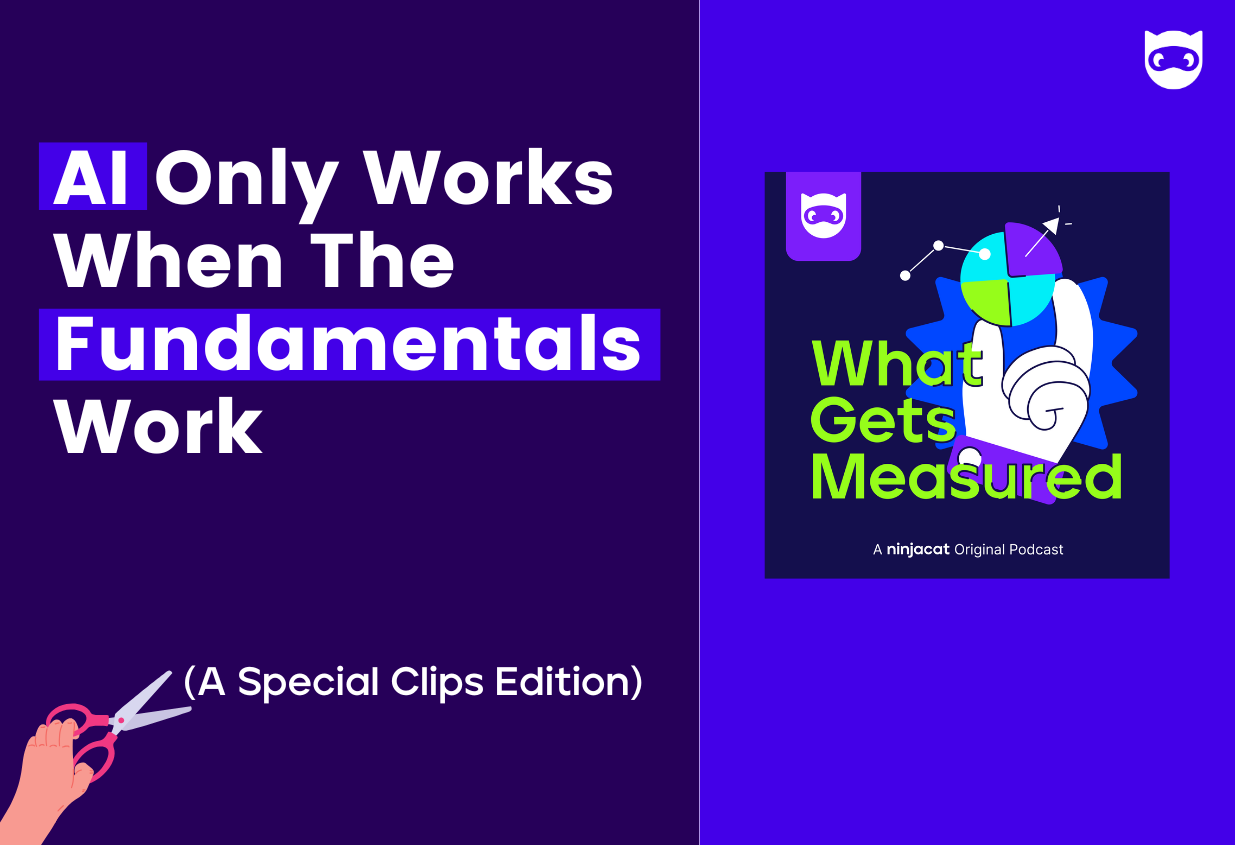What are ETL Tools and Why Should Marketers Care?

Data. You can't live with it—you can't live without it.
As a marketer, you rely on data to make informed decisions. However, collecting reliable data, figuring out what the numbers mean, and extracting actionable insights is easier said than done.
That's where ETL tools come in handy.
Without ETL tools, you're just accumulating data and trying to make sense of the chaos. It's an uphill battle that resembles a growing landfill rather than a blossoming data-backed marketing strategy.
Here are a few statistics to give you an idea of what you're up against:
- Data analysts typically use 4-7 different tools to perform data-related activities
- The average data worker leverages at least 6 different data sources, 40 million rows of data, and 7 different outputs
- 33% of data workers believe they waste time preparing data
Want to transform that mountain of data from a liability into an asset? First, let's get on the same page about ETL tools, how they work, and why you need them.
What Are ETL Tools?
ETL stands for extract, transform, and load. ETL tools follow this 3-step process to extract data from a source, transform it into a usable state, and load the cleaned data into a data warehouse or business intelligence (BI) tool.
If you're like the average data worker with half a dozen different data sources, an ETL tool can help connect and harmonize your data for an apples-to-apples comparison in a BI tool.
ETL tools come in all shapes, sizes, and functionalities. Some simply connect marketing data sources to a centralized data system. Others allow you to run advanced calculations, track custom metrics, and even act as the data warehouse (as opposed to moving all your cleaned data somewhere else).
For example, an ETL tool can help collect your marketing data from Facebook Ads, Google Analytics, and Constant Contact, reformat the data to a uniform standard, and then load that data into a data warehouse like Snowflake or BigQuery.
How Do ETL Tools Work?
Let's breakdown the ETL abbreviation further to see how ETL tools work:
Extract
ETL tools pull data from multiple sources. Marketers could manually download CSV files of their data during the extraction process, but this wastes time and exposes data to human error.
Instead, a better extraction process is to use an ETL tool to integrate with your data sources. This is often done through an API. Using an API to extract data makes the information in your BI tool real-time and always up to date.
Transform
Once you've extracted your data, it's time to clean it and format it to harmonize with the data from all your sources. For example, when you pull data from Google Analytics and Facebook Ads, it's going to show diverse information and store that data differently. Google Ads uses the term "Cost," while Facebook Ads uses the word "Spend" when talking about the exact same thing, but you don't want this information stored in 2 separate columns—that would distort your data.
The manual process would involve marketers sifting through CSVs or databases, deleting columns, merging like-kind data points, and creating a uniform way to compile the data. An ETL tool does this process in real-time, extracting data and transforming it appropriately before depositing it in your data warehouse. It also can run advanced calculations to generate new insights based on the data you collected.
Load
Finally, the last step is loading your transformed data to an end destination. This might be your data warehouse, data visualization app, or a BI tool.
You can load your data all at once, or you can schedule it to load incrementally at regular intervals.
Now, you have all your data from all your sources in one centralized location. Congratulations, you have a single source of truth. You're ready to analyze the data, draw insights, and make future game plans.
Why Do You Need ETL Tools in Marketing?
Marketing data without ETL tools is like taking the stairs instead of the escalator. You'll eventually end up at the same destination, but one requires a lot more time and energy.
Here are a few ways ETL tools improve marketing data and decision-making:
- Automation: Data extraction and transformation takes time—valuable time that your data analysts could better spend analyzing data and extracting insights (things robots can't do as well).
- Accuracy: Human error and inconsistencies can muddle your data, especially if there are multiple hands in the process. ETL tools keep things accurate by removing human input and processing errors.
- Simplicity: ETL tools include built-in features and easy integrations that are marketer-friendly. That means you don't need extensive developer help setting up your systems—and you don't have to tap a developer whenever you want to extract different data points.
- Real-Time: ETL tools automate the process and work behind the scenes, which means you don't need to wait until your analyst can make time before you can draw insights from your data. Your ETL tool can load the data at regularly scheduled intervals to ensure the data in your BI tool is always up to date.
- Improved Insights: Better data, increased efficiency, and more time for your marketers lead to improved insights and better decision-making.
Do More With Your Data
Ready to tame your data chaos? Let NinjaCat transform your marketing analytics. We provide end-to-end data management tools that include ETL and much more.
Connect NinjaCat with 150+ integrated marketing channels to collect, clean, transform, and ship your marketing data. Store trillions of rows of data with the most stringent compliance and privacy requirements to ensure your data is safe at scale.
Want to see our ETL tool in action? Schedule a demo with our team. A 30-minute call with one of our experts could save your marketing team thousands of future hours.




.png)
